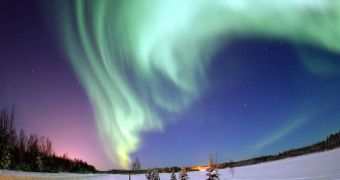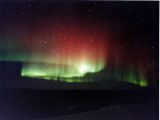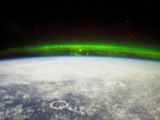The northern and southern polar regions of our planet are at times lit by some of the most beautiful phenomena in the world – the Aurora Borealis and Aurora Australis. These lights originate in an upper layer of the atmosphere known as the ionosphere, when charged particles originating in the Sun and transported here by solar winds collide with particles located in Earth's magnetosphere. These collisions, which mostly involve electrons, but can also feature protons and other elements, generate the glow in the skies, which has captured the fascination of most people venturing in the regions from which the lights are visible.
According to researchers, the appearance of auroras is shaped by the Earth's magnetic lines, as proven by the fact that the curtain variety of the phenomenon is almost at all times oriented alongside these lines, and not perpendicular on them. Satellite observations showed that indeed electrons from solar winds tend to follow the guidance of these lines, and to move towards Earth by spiraling downwards along them. Over the course of history, people have been fascinated with these lights, and, especially in the 19th century, thorough scientific investigations linked the phenomenon with the production of electrical current.
Between 1859 and 1962, the American Journal of Science hosted a series of articles published by US mathematician Elias Loomis, who recorded the effects of the largest coronal mass ejection in history. Experts now believe that the Sun emitted some of its strongest winds during those years, reaching approximately its maximum calculated potential. It was at that time that scientific magnetometer measurements proved beyond a doubt that auroras and electric potential are tightly linked.
During the large intense solar storm, some 125,000 miles (201,000 kilometers) of telegraph lines were completely fried. However, there were some portions of the system that were not affected, but rather augmented by the events. On September 2nd, 1859, the following conversation was recorded between telegraph stations located in Boston and Portland, respectively:
Boston: "Please cut off your battery entirely for fifteen minutes." Portland: "Will do so. It is now disconnected." Boston: "Mine is disconnected, and we are working with the auroral current. How do you receive my writing?" Portland: "Better than with our batteries on. Current comes and goes gradually." Boston: "My current is very strong at times, and we can work better without the batteries, as the aurora seems to neutralize and augment our batteries alternately, making current too strong at times for our relay magnets. Suppose we work without batteries while we are affected by this trouble." Portland: "Very well. Shall I go ahead with business?" Boston: "Yes. Go ahead."
This proves that the Auroras have a very strong effect on magnets, and can generate electricity on account of the fact that electrons composing them can move perpendicular to magnetic lines. Scientists have for a long time tried to find a way to harness the amazing power of these events, but have thus far failed to come up with a cost-effective method. Hopefully, future investigations will yield better results.

 14 DAY TRIAL //
14 DAY TRIAL // 



